Tasmania: Backpacking (& slackpacking) the Overland Track
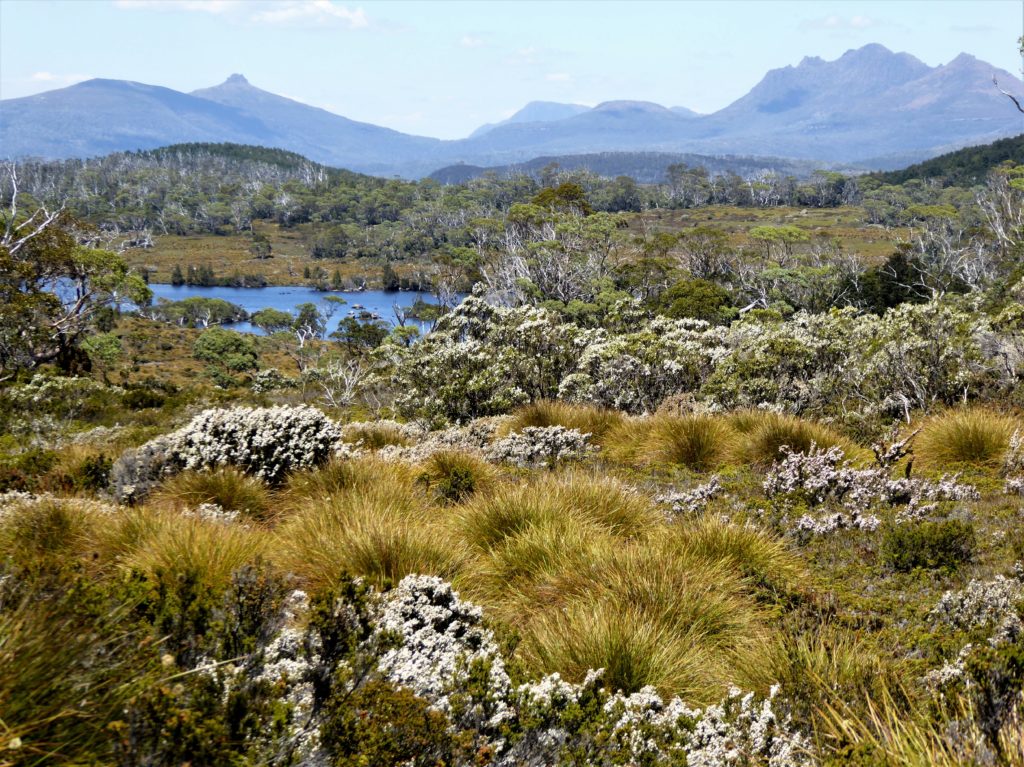
Tasmania’s got a certain mystique. It’s remote. Wild. The home of devils, and convicts. And one of the best long-distance hiking trails in Australia, the Overland Track.
The Overland Track is frequently listed among the world’s best backpacking trips. The track stretches across two national parks in the Tasmanian Wilderness World Heritage Area–one of the world’s last remnants of temperate wilderness. It’s hard to get here. But if you do figure out how to get to the Overland Track, you’ll walk a stunning landscape where you can drink unfiltered water and go for days without seeing human development. “Tassie” is only a short flight from Australia’s largest cities; however, you’ll be in remote country if you tackle this six-day trek through the Tasmanian wilderness.
Overview of the Overland Track

Tasmania is a small island that separated from mainland Australia millions of years ago. It may be Australia’s smallest state in terms of size and population. However, Tasmania boasts some of the country’s biggest hikes, including the South Coast Track (extreme) and the Overland Track (strenuous).
Most people take six days to hike the Overland Track. From October through May, bushwalkers must book advance permits to walk the Overland Track from north to south. (Outside of the booking season, you can hike in either direction.) The trail begins at the northern end of the Cradle Mountain-Lake St Clair National Park. It ends at the Lake St Clair Visitor Center, which bushwalkers can reach by ferry or by foot (additional 17 km). The trail’s official length is 65 kilometers (ferry) or 82 kilometers; however, most bushwalkers add several side trips (listed below) that extend the hike well beyond 40 or 50 miles.
The track itself is generally easy to follow. Most of the walking surface is boardwalk or crushed rock to avoid environmental degradation and Tassie’s notorious mud. However, stretches of the track and side trips may pass through ankle- or knee-deep muck. Backpackers can choose between community huts and tent platforms or splurge on a private bunk in eco-huts run by the Tasmanian Walking Company (reviewed below).
Tasmania’s unique landscape really sets the Overland Track apart from most long-distance walks. The trail winds through a diverse landscape of button grass moors, dolerite mountains, glacial lakes, alpine heath, eucalyptus trees, and temperate rainforest. I’ve traveled several continents, and the Tasmanian wilderness is definitely unique. The topography looks ancient, and the stark landscape can shift radically in the span of an hour or two.
Tasmanian Landscape
On our first day, for example, the track quickly descended into a button grass moor, met a small waterfall, gradually climbed to an alpine lake, and topped out at scenic Marion Overlook after a strenuous, rocky climb.
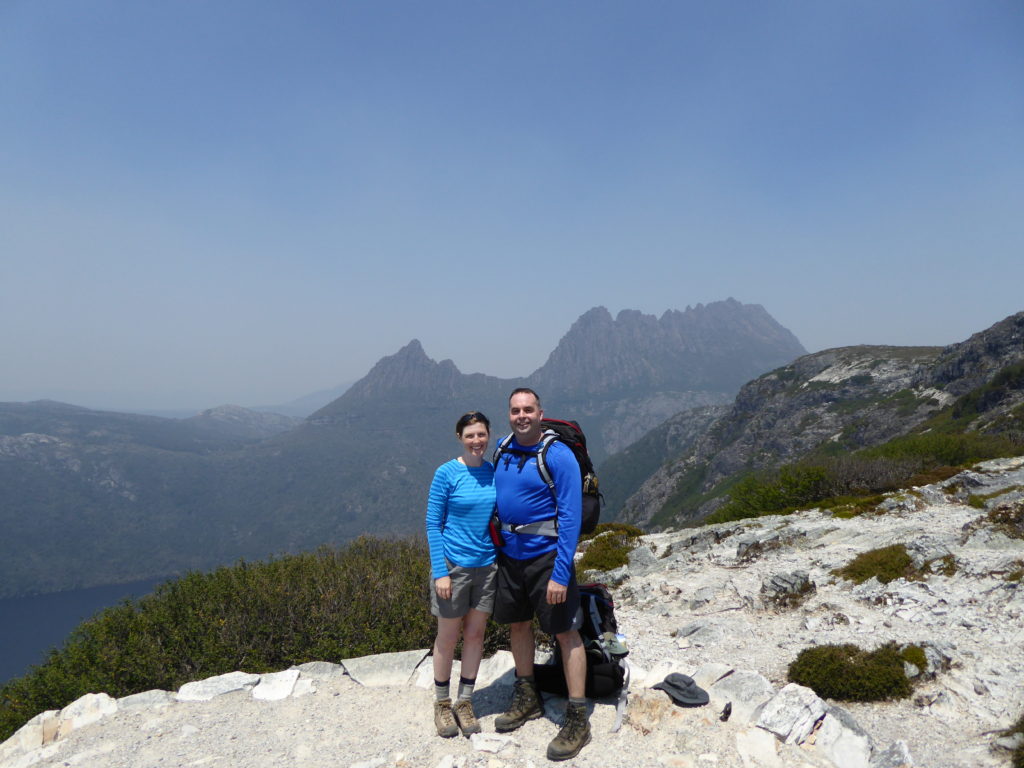
Once we hit the high country, we hiked for hours across a glacial plain with scenic views of Cradle Mountain to the north and Barn Bluff to the south.
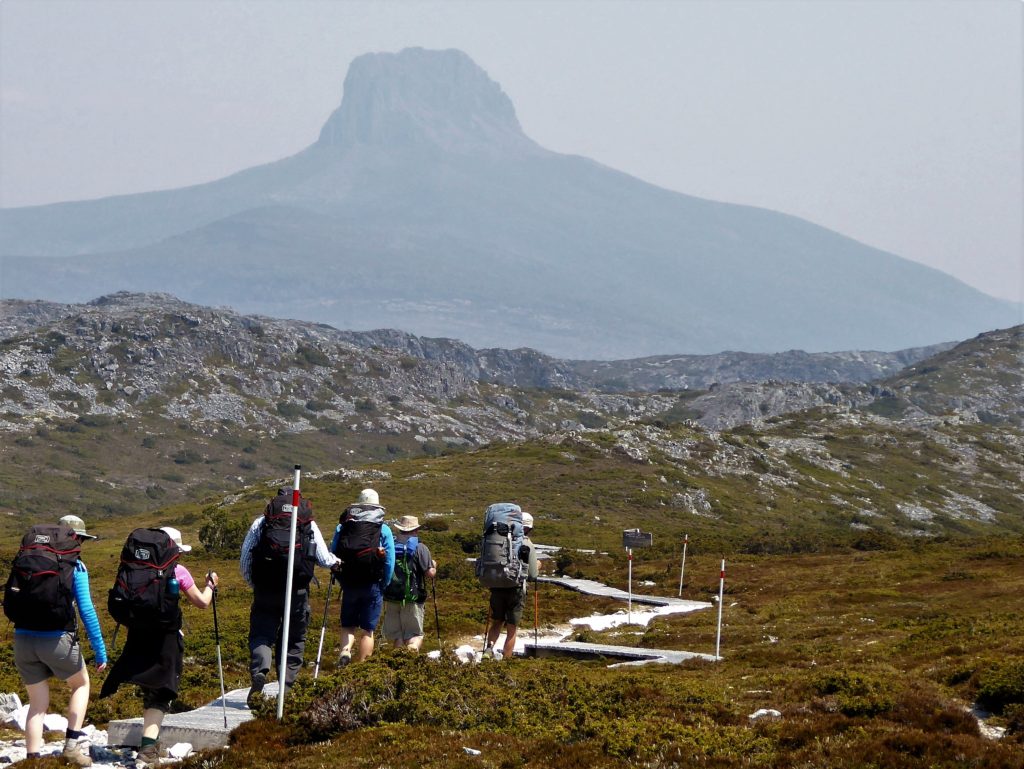
The trail then eased up a bit past Cradle Mountain and Barn Bluff as it descended from alpine country to Waterfall Valley. And that was just day one…
After day one, the Overland Track winds through alpine heath and button grass prairies dotted with rocky knolls, woodlands, and glacial lakes.

The middle of the Overland Track crosses the Pelion plain and climbs through a myrtle-beech rainforest to the Pelion Gap–a high plateau were hikers can access popular summit climbs, including Mt Ossa, Tasmania’s tallest peak (1617m).
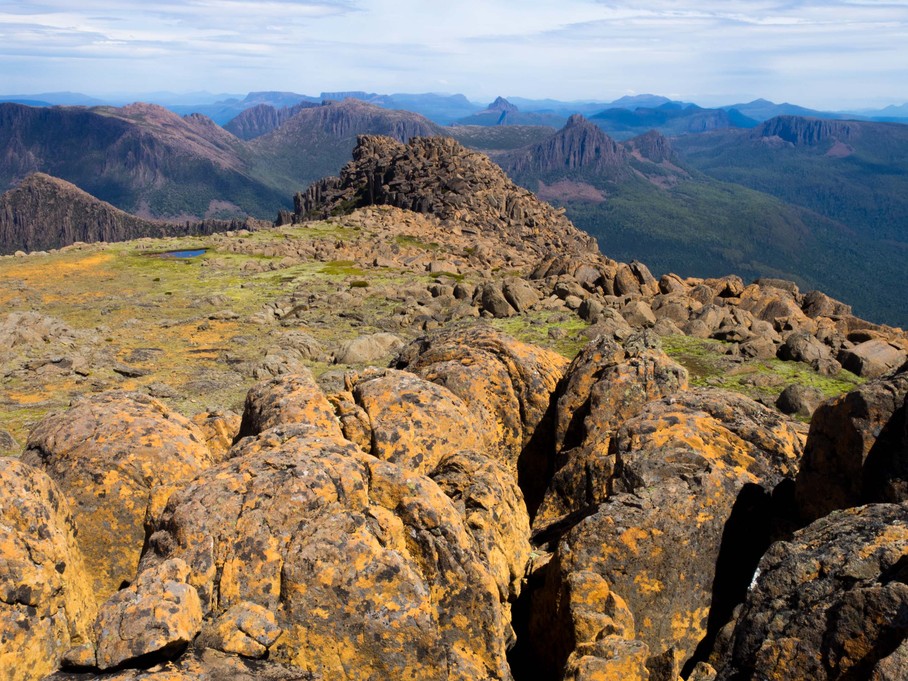
The descent from the Pelion Mountains is extremely scenic as you drop down to button grass plains before climbing back up to a eucalyptus forest.
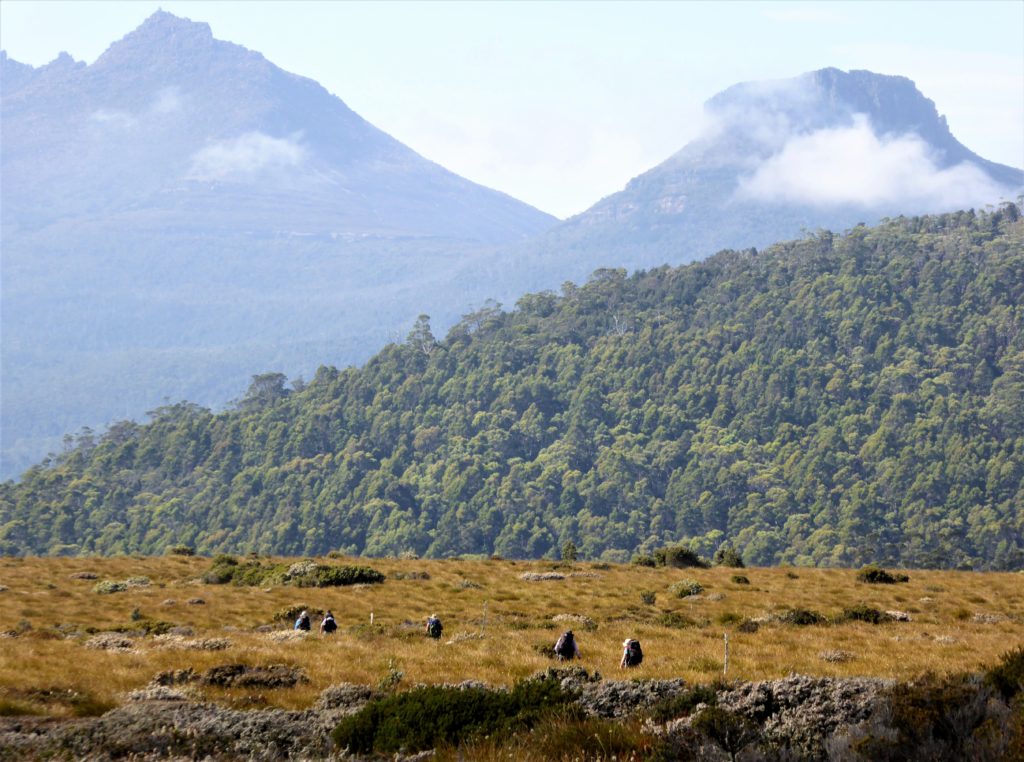
Southern stretches of the Overland Track mostly wind through ancient forests studded with fungi, lichen, and mazes of tree roots.
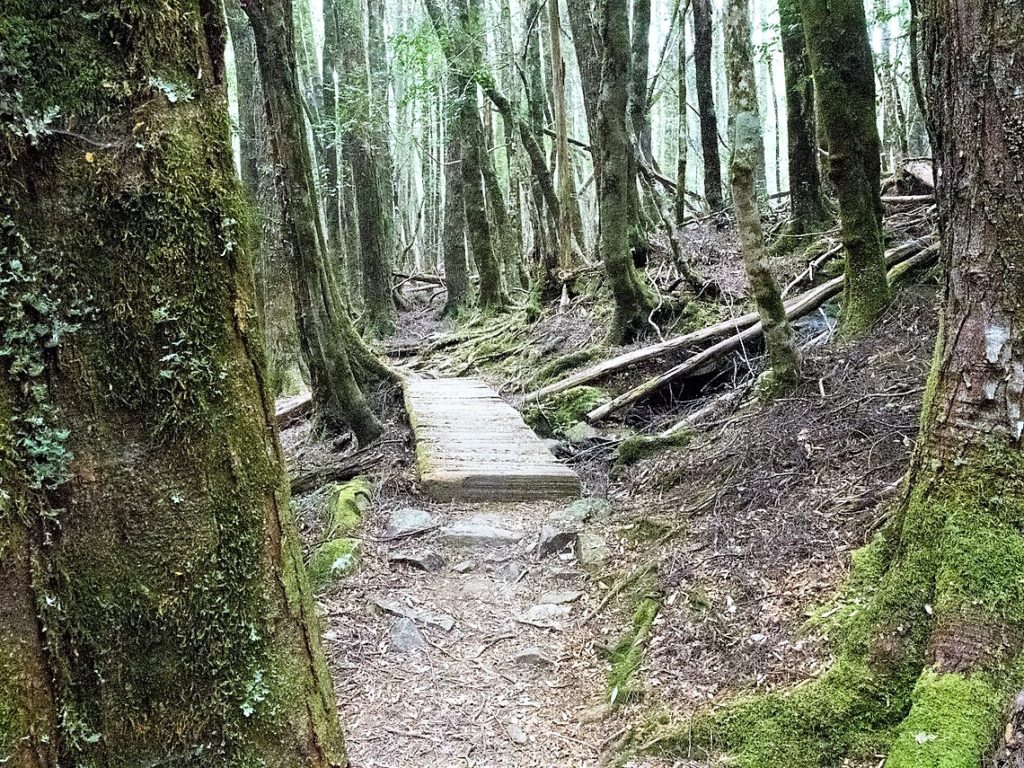
The hike finishes with easy crossings of rivers and button grass plains to the isolated shores of Lake St Clair.
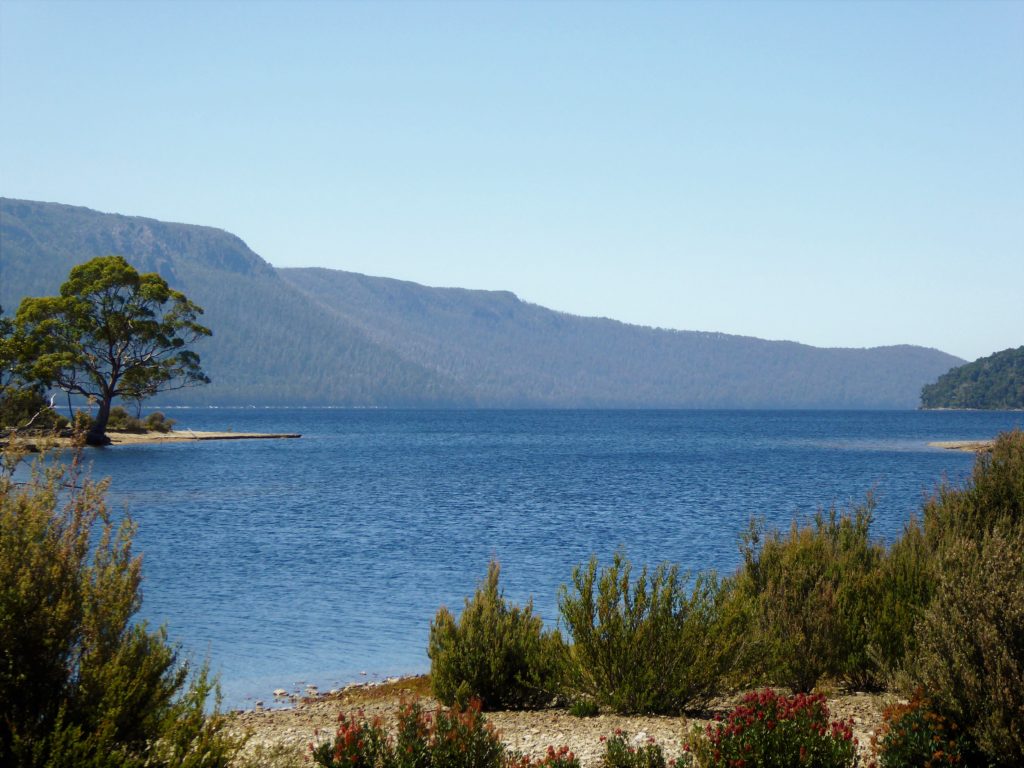
Side Trips on the Overland Track
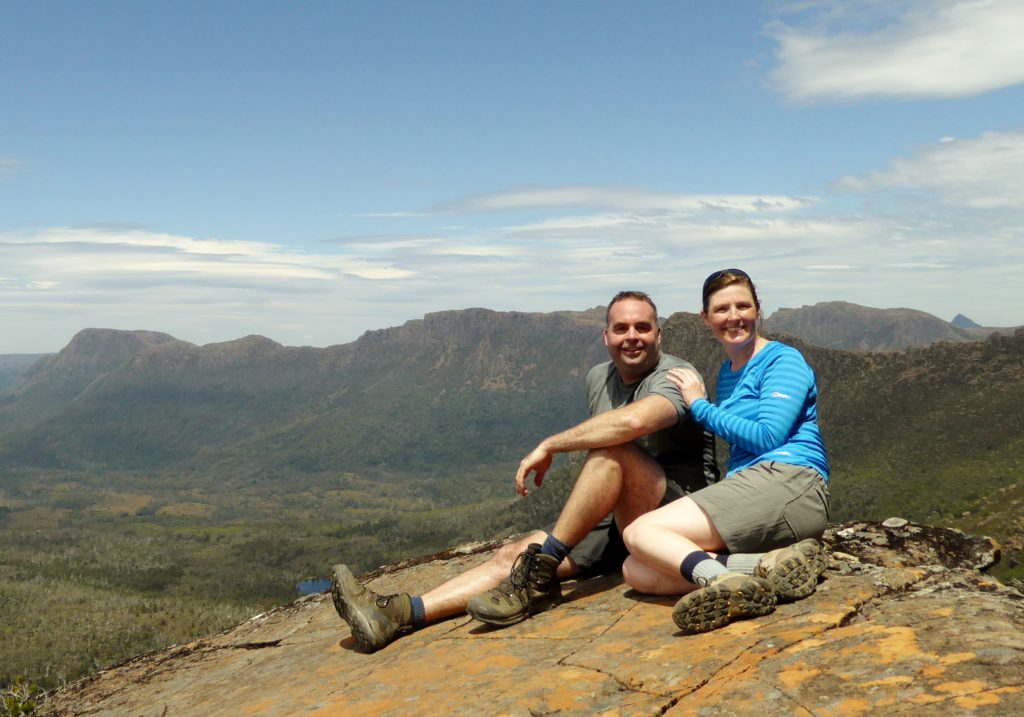
Obviously, there’s plenty to see across 65+ kilometers. However, if you don’t leave the main trail, you’ll miss some of the best parts of the Overland Track. The key to this hike is hitting as many side trips as you can, including (from north to south)
- Cradle Mountain Summit (2 km, 2–3 hours)
- Barn Bluff (7 km, 3-4 hours)
- Lake Will (3 km, 1 hour)
- Mt Oakleigh (8 km, 4-5 hours)
- Mt Ossa (6 km, 3-4+ hours)
- Pine Valley Hut (overnight)
- The Acropolis (day trip from Pine Valley Hut)
- The Labyrinth (day trip from Pine Valley Hut)
- Ferguson Falls and D-Alton Falls (1 km/ 1 hour)
- Hartnett Falls (swimming hole) (1.5 km/1 hour)
We worked several of these side trips into our guided walk with the Tasmanian Walking Company (see below), including Lake Will, Mt.Ossa, and D’Alton Falls:
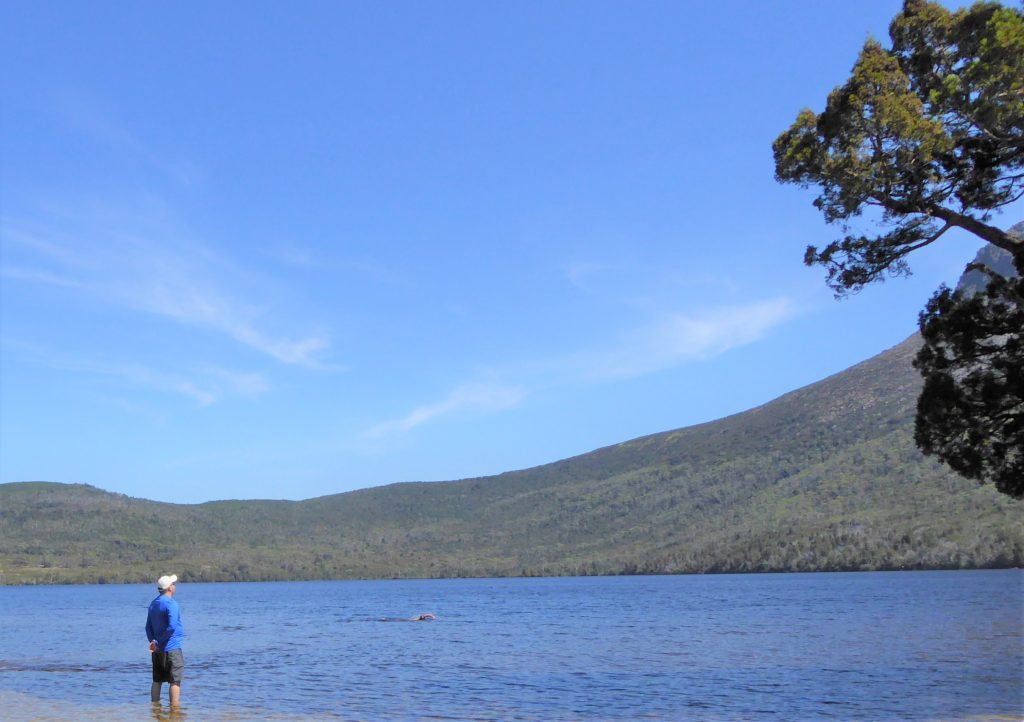
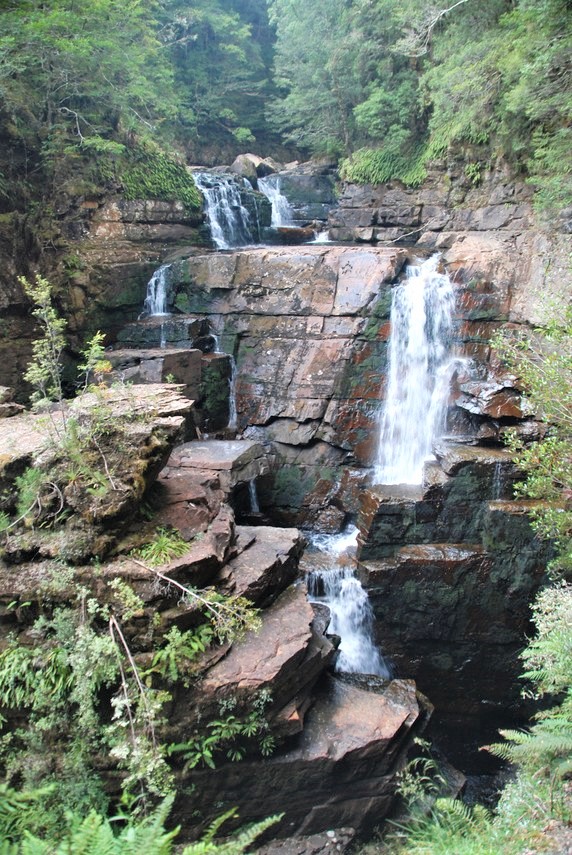
Overland Track Swimming Holes
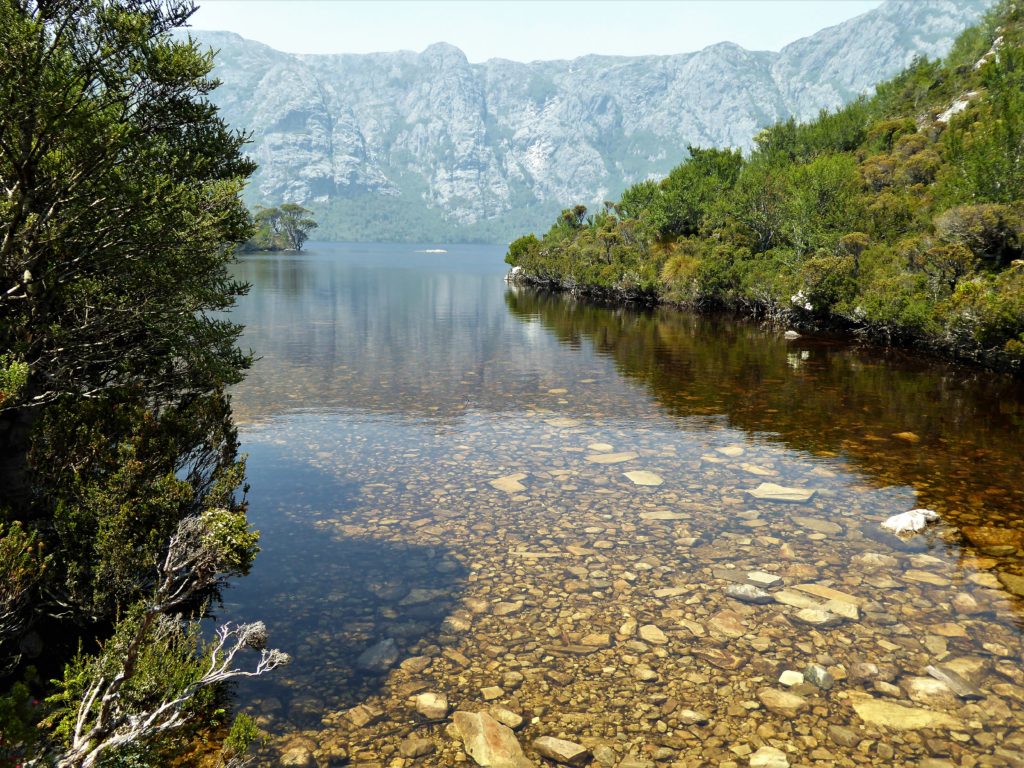
In warm weather, backpackers can also swim at Dove Lake, Lake Will, Lake Windermere, Hartnett Falls, and Lake St Clair. If you like the water, these are all scenic swimming holes. The water is pristine, but cold. (Seinfeld fans: think “shrinkage”!) We took the plunge into Lake St Clair at the end of the trip. However, others in our group did all five swims on the Overland Track.
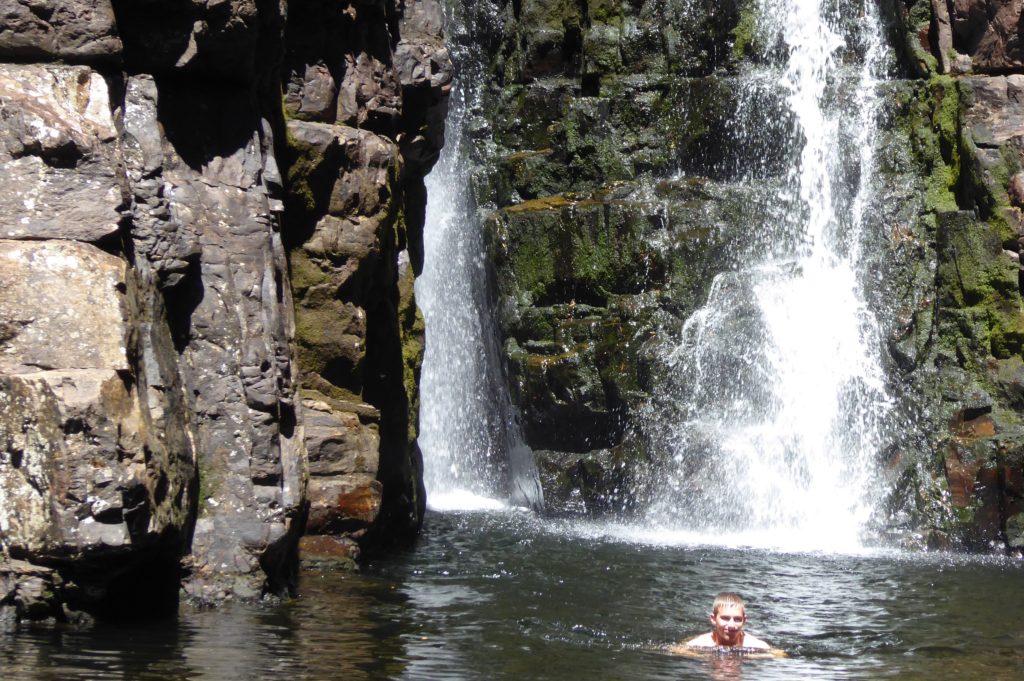
Plants & Animals on the Overland Track
We expected to see plenty of wildlife in a protected wilderness area. However, we only saw a handful of animals over six days of walking.
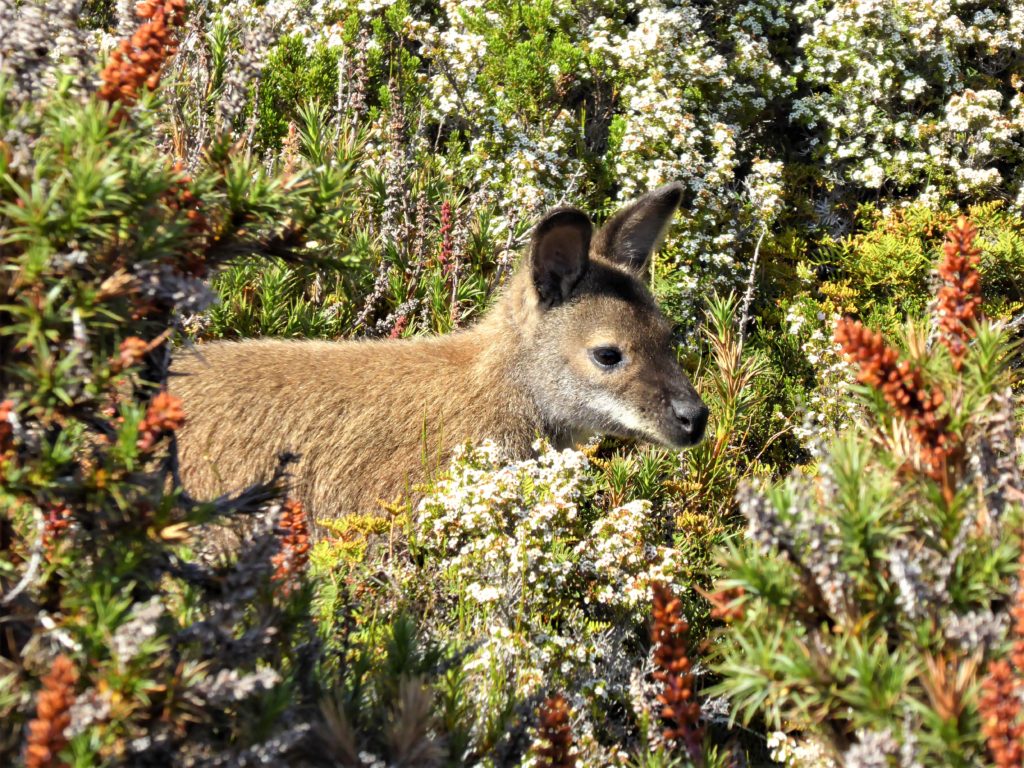
Wallabies and Pademelons are occasionally visible along the Overland Track. Tiger snakes are common. Tasmanian Devils are rare (and facing possible extinction). We didn’t see any wombats, but we got a rare view of a platypus in broad daylight and encountered a few echidnas along the trail.
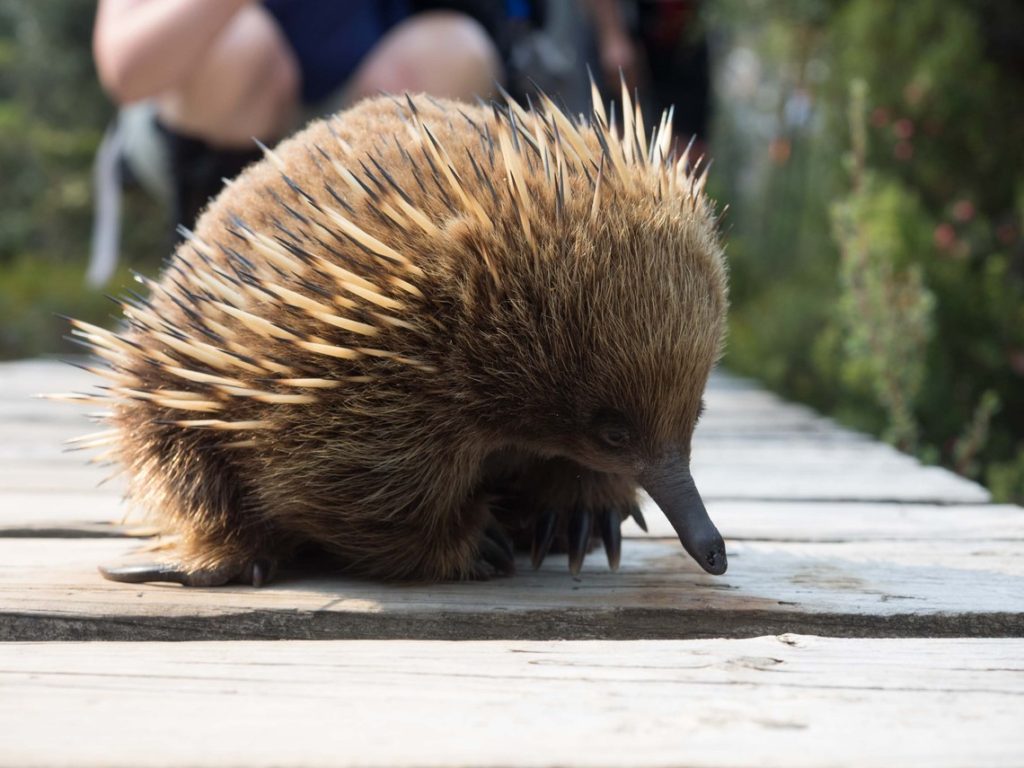
The flora beat the fauna on this trip. As much as we love marsupials and Tasmania’s big scenery, we found many of its smallest plants mesmerizing. Our guides introduced us to several unique species, including carnivorous plants that feed on insects.
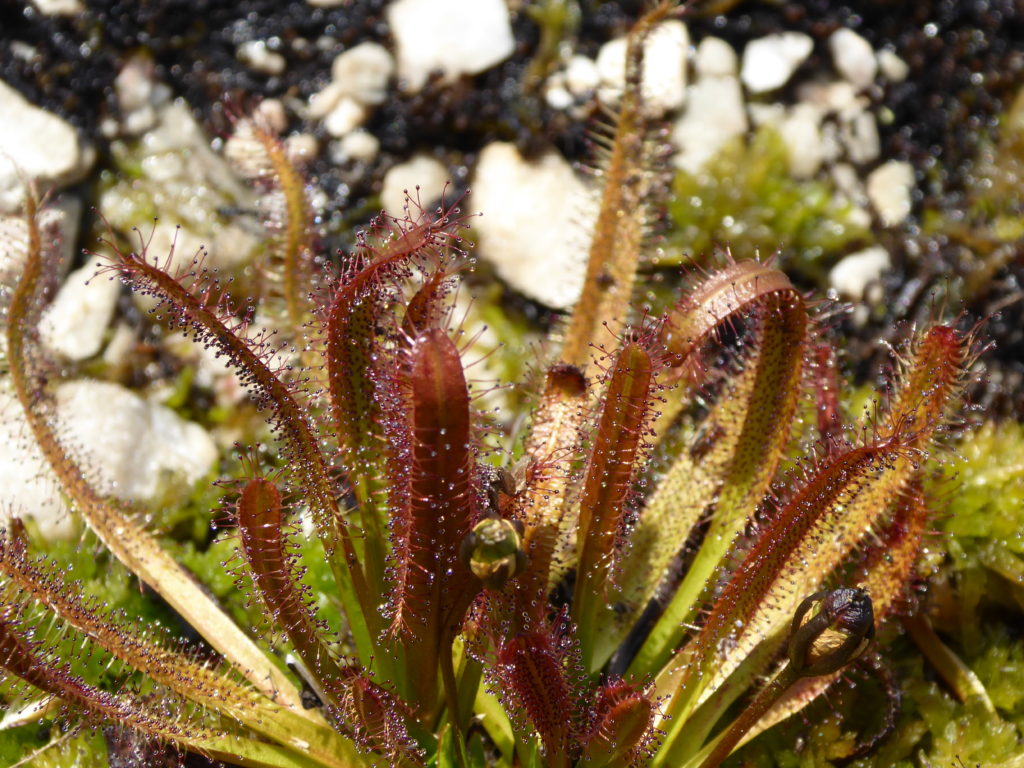
We also learned to recognize “bush tucker”–edible plants and flowers eaten by indigenous Australians. One of our guides was completely smitten by the colorful fungi that proliferate in Tasmania’s ancient rainforests. As we learned to recognize carnivorous plants, hallucinogenic mushrooms, and flowers that tasted like butterscotch, we appreciated the diversity of life that somehow thrives in this harsh environment.
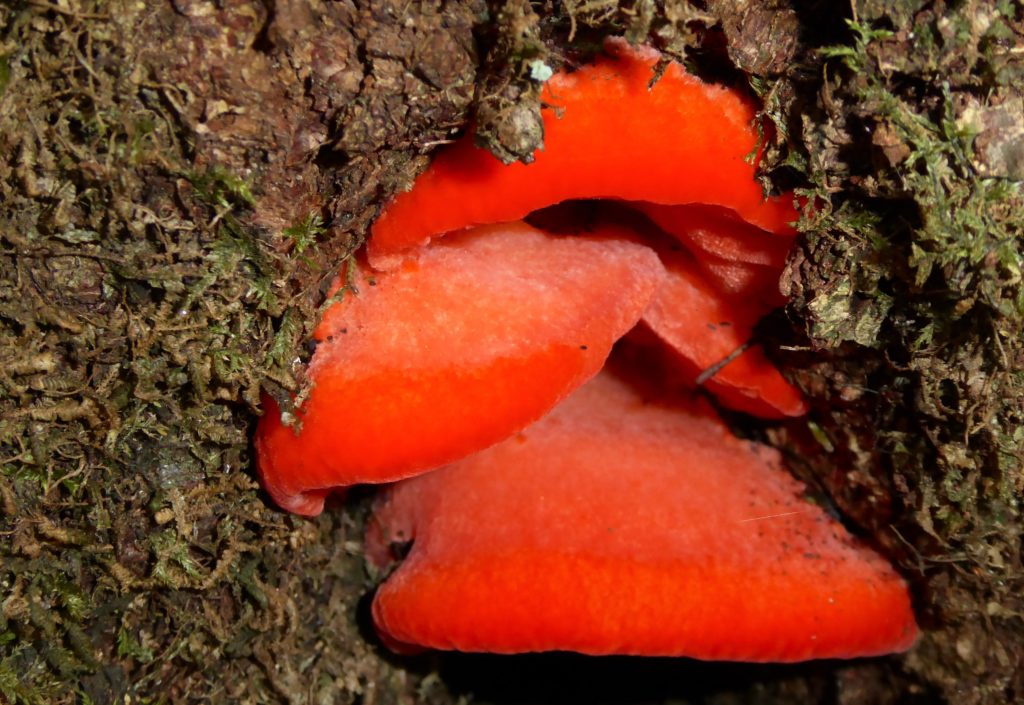
Overland Track Weather & Packing List
And it is a harsh environment. Tasmania is cooler than mainland Australia, and the western half of the island receives considerable wind and rain. The weather is unpredictable. It can snow year-round on the Overland Track, especially in the alpine areas. Hikers die of hypothermia here, even in summer. For us, however, the danger wasn’t storms, snow, or hypothermia, but wildfires. We visited Tassie during a serious drought–and were close enough to wildfires to see flames from the Pelion Gap.
The point is, don’t take Tasmania lightly. Given the exposure and unpredictable weather, the Tasmanian Walking Company recommended the following packing list* for our summer bushwalk:
- Polar fleece jacket (preferred) or woollen jumper/pullover
- Light jumper (warm)
- Beanie or balaclava
- Gloves or mittens
- Waterproof over-pants (nylon, PVC or Gore-tex)
- Gaiters (for protection against mud and rough vegetation)
- Shorts and/or light walking trousers
- Thermal base layer (long-sleeved top and long johns – merino or polypropylene; 2 sets preferred)
- Warm, long pants (evening hut wear)
- Shirts/t-shirts (merino or polypropylene; 3 recommended)
- Socks (3 pairs recommended)
- Underwear
- Lightweight indoor footwear (thongs/sports sandals; for hut use)
- Sun hat & sunscreen (small bottle for use during the day)
- Travel towel or body chamois (for showering; light and quick-drying)
- Water bottle(s) or water bladder (2-litre total capacity required; our packs can fit a water bladder – just ask your guides)
- Head torch or small torch
- Lightweight, compressible day pack (essential for adventure departures, recommended for regular departures – should pack down to pocket size; available for purchase at our walking base)
- Any personal medication, including anti-inflammatories and EpiPens
* DENIM AND COTTON CLOTHING ARE NOT ACCEPTABLE
Trip Rating: One for the Bucketlist
Lonely Planet once named the Overland Track the world’s best backpacking trip. It’s a great trail, but I wouldn’t go that far. The scenery is truly stunning–but more unique than dramatic (e.g. Grand Canyon). If you’re looking for a week-long backpacking trip in Australia, this is one of my top three. It’s definitely an Australian bucket-lister, but not necessarily a world bucket-lister.
Overland Track Logistics
Are you thinking about doing the Overland Track? Cool. Here are some tips and resources to book the trip and decide between a traditional backpack or a guided hike with the Tasmanian Walking Company:
- Bookings. To walk the Overland Track, every hiker needs a Tasmanian National Parks Pass (order online here). If you’re walking during the booking season (1 October-31 May), you must also purchase an Overland Track permit ($200 adult/$160 child). Click here to book this trip or read complete booking information.
- When to go. Most people walk within the booking season (October-May). (Only experienced alpine hikers should consider the Overland Track in the winter.) The busiest times will be during the summer holidays (December-January). February and April (fall colours) are prime months to book the Overland Track.
- Transportation. Most travelers will find it easiest to fly into Launceston (2+ hours from Cradle Mountain trailhead) and fly out of Hobart (2.5 hours from Lake St Clair). Check this link for bus options (recommended) and car shuttles that reach the Overland Track from Launceston, Devonport, and Hobart. Please note that no direct roads connect the beginning and ending of the walk. (If you book the Cradle Mountain Huts Walk, the Tasmanian Walking Company will arrange all transportation, permits, etc.)
- Lake St Clair Ferry. Many bushwalkers skip the final leg of the Overland Track (Narcissus Hut to Cynthia Bay) by catching a ferry at Narcissus Hut (advanced bookings recommend). Here’s the link to book a ferry across Lake St Clair.
Overland Track Huts & Camping
Backpacking purists have the choice of sleeping in community huts or on camping pads located near the huts. (Even if you plan on sleeping in the huts, every backpacker must carry a tent.)
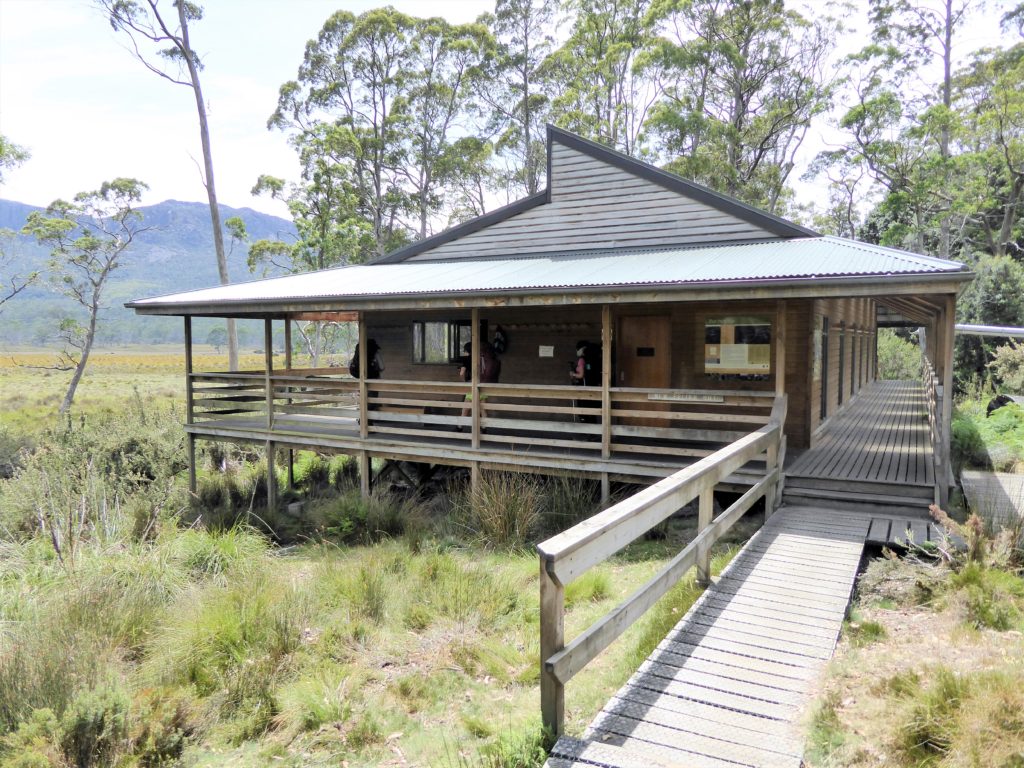
How do you get water? Australia is the driest continent on the planet, but water is plentiful in Tasmania. The Overland Track is one of the few places left on the planet where humans can drink natural water. Leave your filters and tablets at home. You can drink untreated water from most of the steams, springs, and lakes (minus Lake Windemere) along the track. Enjoy!
Cradle Mountain Huts (slackpacking)
Backpackers are gonna hate, but you can also “slackpack” the Overland Track on a guided trip with Tasmanian Walking Company. This award-winning company operates the only private huts in the wilderness. Their eco-friendly huts were comfortable, not posh. Still, there’s something luxurious about hiking wilderness by day, and retiring to a warm shower, fresh meal, and private bunk room at night?!
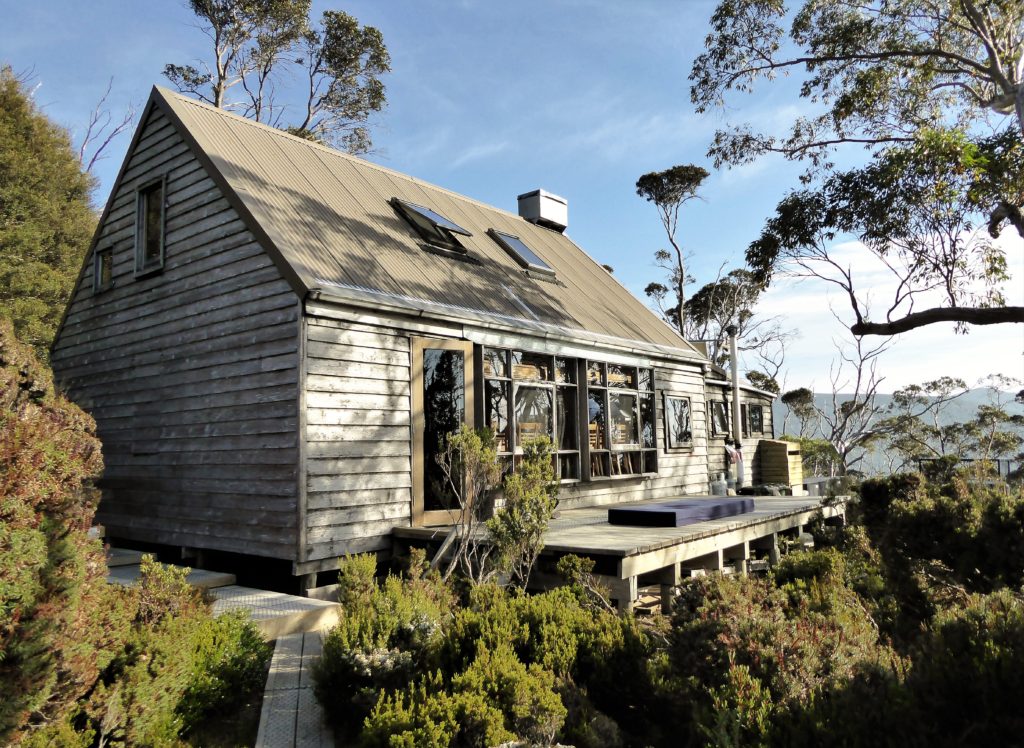
To lure Mrs. HikePaddleTravel to Tassie, I splurged on the Cradle Mountain Huts Walk. It wasn’t cheap. But we enjoyed the perks. Our two guides were interesting, quirky, and well trained. By day, they led side trips and educated us about the land and Tasmanian culture. By night, they cooked fresh meals and poured us Tasmanian wines. With wildfires nearby and Tiger Snakes on the trail, they were also a nice safety net in case of an emergency.
If wilderness, wine, and warm showers sounds like your thing, I highly recommend the six-day Cradle Mountain Huts Walk. For many people, the Cradle Mountain Huts Walk will be money well spent. On my next trip to Tasmania, however, I would opt for the traditional backpacking trip. I enjoyed the side trips on our guided trip (Mt Oakleigh and Mt Ossa), but I also would have liked to have hiked Cradle Mountain, Barn Bluff, and the Acropolis, which were not part of our guided trip. Either way, the Overland Track is a great route for backpacking–or slackpacking–a pristine stretch of Tasmanian wilderness.
Tassie Travels
Tasmania is definitely off the beaten track. If you’re a hiker or traveler who makes it to Tassie, however, it’s worth the hassle to get to the Overland Track. Take a week to complete the trail and as many side trips as you can manage. If you’re an avid hiker, it’s worth tacking this trip on to your Australian vacation and adding the Overland Track to your Australian bucket list.
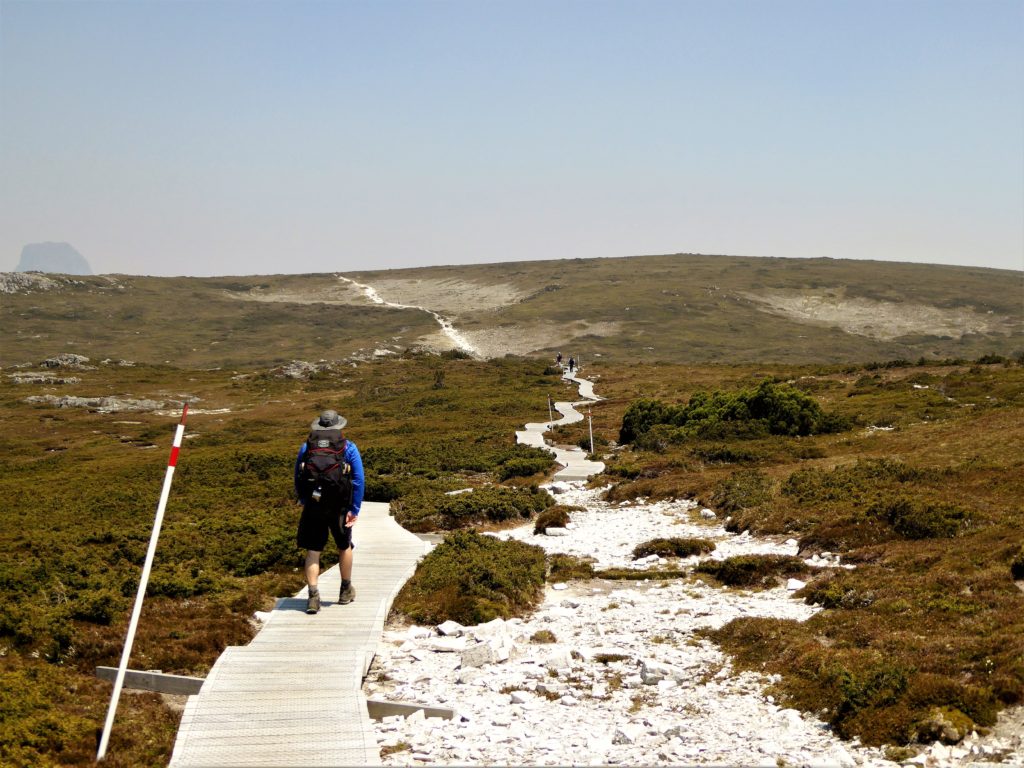
Happy hiking!